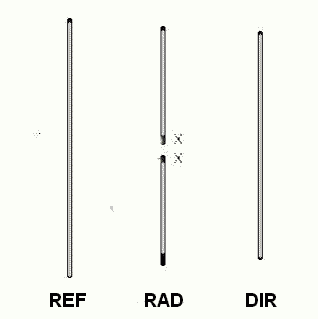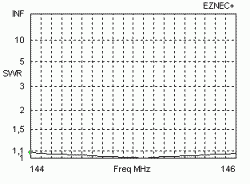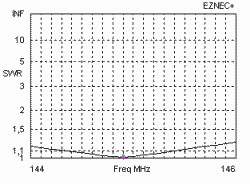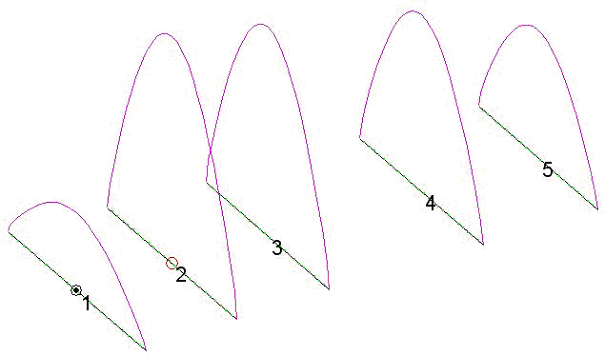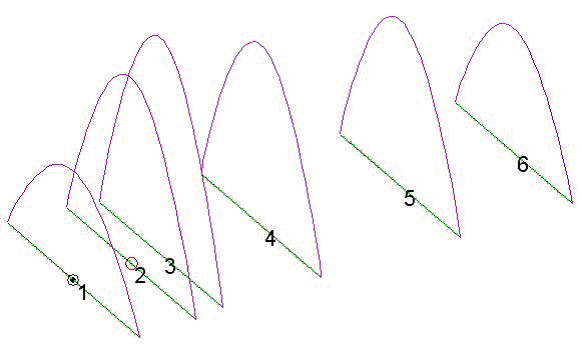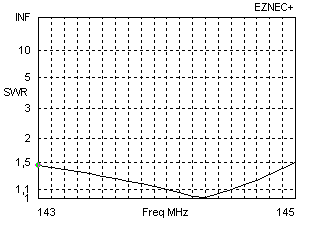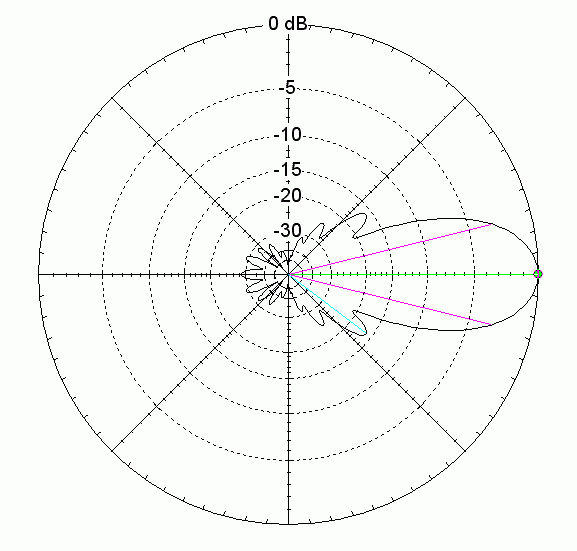Here are some arguments and questions you
can hear about Yagis and my answers:
1.
Medium impedance Yagis (28 Ohm) have losses
We
had these arguments here in DL years ago, when I introduced my
28-Ohm-Yagis. People said, an antenna has to have 50 Ohm impedance (Why?
Because the cable has 50 Ohm?). It took 5 years until the amateurs
believed that it must not.
In
the last ten years more and more “homebrewers” built thousands of
that Yagis and in DL, SP, OM and OK the most contest crews with homemade
antennas are running DK7ZB-28-Ohm-Yagis. And believe me, there are a lot
of experienced hams who know what they do.
When
you optimize a Yagi you must set the parameters for the optimizing
conditions: Gain, bandwidth, pattern and impedance. I normally do not
start with the impedance! A good compromize between the first three
arguments does not lead to 50-Ohm-impedances automatically, in much
cases an impedance around 30 Ohm is better.
Why
no impedance match? Why should a short piece of two paralled 75-Ohm-coax
cables cause more losses than a normal piece of coax as used in a
half-wave-balun? When you construct a stacking harness for a H-frame
with four 50-Ohm-Yagis you use quarter-wave transformation lengths to
points of 25-Ohm-impedance. Do you believe in any mystic losses in that
case? I do not.
2.
OWA-Yagis are a better choice
If
you prefer a wide bandwidth and lower gain, why not? But in most cases
you do not need that. If you have a lot of
metal around the antenna your OWA-Yagi shows only a little
influence to the SWR indeed. Great! But what you do not see is the
distortion of your pattern and the reduced gain. Better is a clean
surrounding of your antenna….. and then you can use a design with
higher gain and better performance.
Real
OWA-Yagis have a lot of elements on a smaller boom and can have 50 Ohm,
but must not.
3.
50-Ohm-direct feed is better than a lower impedance
Do
not believe that 50-Ohm-feed in a Longyagi means greater bandwidth! If
you compare the magnitudes and phases of the currents in the radiator
and the D 1 in a 50-Ohm-design you will see the cause for many problems:
The close spaced first director is no real director, it has a much
higher current than the radiator itself and that coupled system with
“open-sleeve-principles” has severe influence to the pattern and the
impedance across a greater part of the band (and losses, if you use a
Flexa-Yagi with thin steel rods).
There
are some new developments, which claim "50-Ohm-direct-feed",
e.g. the LFA-Yagis by G0KSC. But these Yagis are low-impedance-Yagis,
where the loop is the match from 12,5 to 50 Ohm. This has some
advantage, because the impedance matching acts similar as with a horizontal folded dipole with a greater distance between the
two parts.
An
other way for a 50-Ohm-feed is a OWL-Yagi with 12,5 Ohm impedance and a
folded dipole, which gives an impedance ratio of 1:4 and 50 Ohm.
So,
what is "low-impedance"? Anay match device can transform to an
impedance of 50 Ohm. This can be the quartewave-coax-cable solution, a
folded dipole or a LFA-loop.
